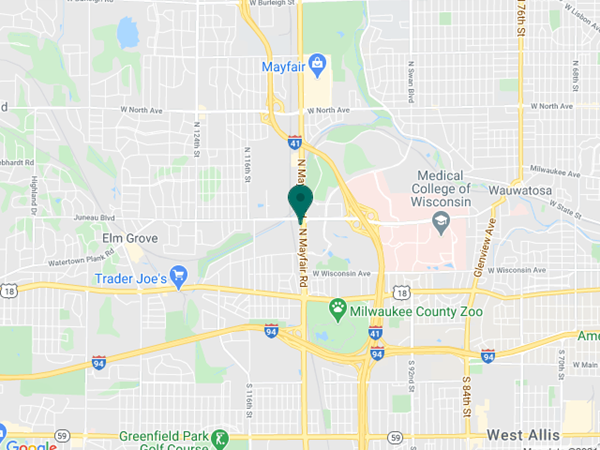Pain Management at the Medical College of Wisconsin
Our Pain Division is your local, expert resource for managing and treating pain conditions. All of our physicians are board-certified and have extensive training in multidisciplinary approaches to pain management. Our team of anesthesiologists, behavioral health specialists and physiatrists specialize not only in minimally invasive and surgical procedures, but also in physical therapy, psychological therapy and non-opioid medication options.
Call (414) 955-7601 to schedule an appointment with one of our pain experts today, or speak with your primary care doctor about visiting one of our specialists.

Conditions We Commonly Treat
- Chronic spine pain (longer than 3 months)
- Back pain
- Neck pain
- Spinal nerve pain
- Pain related to herniated intervertebral discs (slipped discs, pinched nerves)
- Facetogenic pain (pain from arthritis in the small spine joints)
- Intervertebral disc pain from degenerated disc disease (DDD)
- Spinal stenosis pain
- Neuropathic pain (pain related to nerves)
- Diabetic peripheral neuropathy
- Small fiber neuropathy
- Idiopathic neuropathy
- Medication- or illness-induced neuropathy
- Post-herpetic neuralgia (pain after Shingles)
- Trigeminal neuralgia
- Complex Regional Pain Syndrome or CRPS (formerly known as Reflex Sympathetic Dystrophy or RSD)
- Limb pain associated with peripheral arterial disease
- Post-amputation or phantom limb pain
- Headaches and migraines
- Musculoskeletal or joint pain (such as knee, hip or shoulder pain)
- Orofacial pain
- Cancer pain
- Fibromyalgia
- Pain related to injury
- Post-laminectomy pain (failed back surgery)
Adult Pain Clinics


Menomonee Falls
Froedtert & MCW Town Hall Health Center
W180N8000 Town Hall Rd.
Menomonee Falls, WI 53051

West Bend Health Center
Pediatric Pain Clinics


New Berlin
Children's Wisconsin - New Berlin Clinic
4855 S. Moorland Rd.
New Berlin, WI 53151
Services
- Pain psychology services, including psychotherapy, biofeedback and meditation
- For spine pain: facet joint procedures
- Medial branch nerve blocks
- Medical branch nerve radiofrequency ablation (denervation)
- Intraarticular facet (in the joint) blocks
- For spine, leg or arm pain: epidural procedures
- Interlaminar epidural steroid injections
- Transforaminal epidural steroid injections
- Selective nerve root injections for diagnosis
- For spine pain: intervertebral disc procedures
- Sacroiliac (SI) procedures
- SI joint injections
- Lateral branch nerve injections
- Lateral branch nerve radiofrequency ablation (denervation)
- Neuromodulation
- Spinal cord stimulation
- Occipital nerve stimulation
- Dorsal root ganglion (DRG) stimulation
- Sympathetic nerve procedures
- Stellate ganglion nerve blocks
- Celiac plexus nerve blocks
- Celiac plexus neurolysis/ablation (cancer pain)
- Lumbar sympathetic blocks
- Superior hypogastric blocks
- Ganglion impar blocks
- Peripheral nerve procedures
- Ilioinguinal
- Genitofemoral
- Coccygeal
- Pudendal
- Occipital
- Joint procedures
- Shoulder, hip, knee steroid injections
- Knee viscosupplementation injections
- Genicular nerve blocks (for knee pain s/p Total Knee Replacements)
- Vertebral augmentation procedures
Providers

Oscar Jim Michael Coppes, MD
Assistant Professor

Ali Daha, MD
Assistant Professor

Omar Dyara, DO
Assistant Professor

Lisa Elliott, DNP
Nurse Practitioner

Sarah Endrizzi, MD
Assistant Professor

Ross Grover, LCSW, MSW
Licensed Clinical Social Worker

Gwynne Kirchen, MD
Associate Professor

Sarah J. Ramirez, PA-C
Physician Assistant

Amit Singh, DO
Assistant Professor

Vladimir Suric, MD
Assistant Professor

Sarah E. Trost, PhD
Assistant Professor
Contact Us
To schedule an appointment:
Call (414) 955-7601


